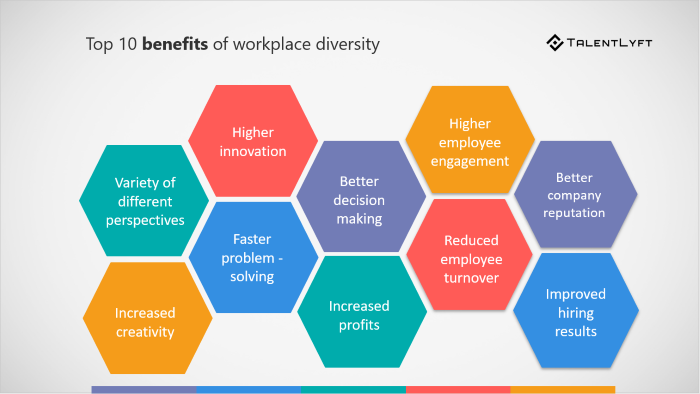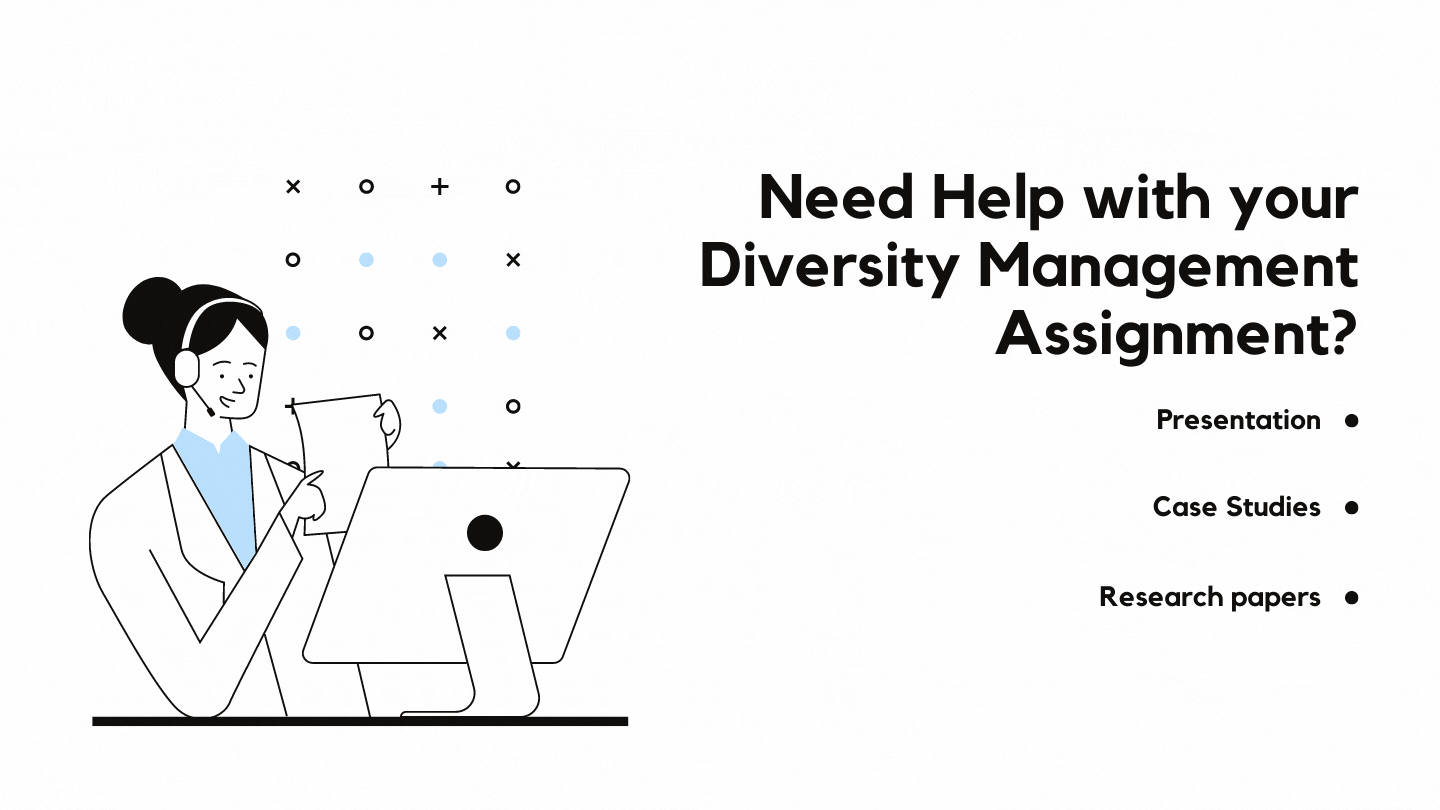The Pursuit of Diversity by Business Organizations
Introduction
The increasing levels of tolerance, together with the enforcement of antidiscrimination regulations and civil rights, has fostered a rapid shift towards the emergence of diverse populations across the world. This shift has profoundly impacted the organizational workforce and has raised a big question mark on how these organizations would embrace workplace diversity. According to Dyson (2020), organizations must comprehend the concept of an inclusive and diverse workplace to cultivate its benefits and be vigilant of the numerous challenges it would bring to their workplaces. In this regard, the purpose of this study is to ascertain whether diversity should be pursued by business organizations considering the various challenges it may bring alongside its benefits.

The Concept of Diversity in Organizations
Diversity in organizations encompasses the differences between the employees of business corporations. The concept of diversity is not only restricted to how these employees identify themselves, but it also embodies the perceptions held by these individuals regarding one another. Researches have established that diversity in organizations involves the tolerance and respect for employee variations in age, values, norms, ethnicity, physical ability, race, gender, physical and mental abilities, sexual orientation, societal status and many other aspects (University of Oregon, 2020; Harrison et al., 2002; Williams and O’Reilly, 1998; Rice and Hand, 2010). Likewise, Saxena (2014) asserts that language and geographical regions are essential components of diversity in organizations, as depicted in the Workforce Diversity Model (see Appendix). Moreover, Hebl and Avery (2012) articulate that there are diversity characteristics that can be categorized into two levels – surface and deep-level. While the surface level characteristics (age, race, gender, etc.) are apparent to others almost immediately, deep-level characteristics (norms, values, opinions, attitudes, etc.) are revealed after some time through verbal and non-verbal patterns. Bah (2015) authenticates that cultural diversity is another vital component of diversity in the workplace because it ensures the provision of equal opportunities to the employees, regardless of their background or lifestyles. Therefore, it can be affirmed that there are multiple aspects immersed in the versatile concept of diversity in organizations.
Significance of Diversity in Organizations
The importance of practicing diversity in the workplace can be evaluated with the support of two theoretical concepts that have guided diversity-related initiatives of numerous organizations across the globe. The Discrimination-and-Fairness Paradigm has enabled business leaders to visualize diversity as a means of granting equal opportunities and fair treatment to individuals in terms of employee recruitment, training and performance-based rewards (Ely and Thomas, 1996). Moreover, the Access-and-Legitimacy Paradigm has enhanced demographic diversity in organizations, thereby fostering market expansion in unexplored regions. As a result, organizations have employed this paradigm to enter new markets, thereby gaining a competitive advantage. Furthermore, Organizational goals are better achieved when individuals of different abilities, strengths and perspectives work together for a common purpose (Education Services Australia, 2020). Due to variations in thinking abilities, Manzoni et al. (2010) assert that diversity leads to better problem-solving skills, innovation, creativity and administrative governance. Diversity also equips organizations with language diversity which is crucial for expanding into untapped global markets, thereby enhancing brand awareness and reputation (Thompson, 2019). Diversified organizations do not only encourage the growth and development of existing employees, but they are also able to retain them and attract a range of talented individuals in their recruitment processes (Sokolava, 2015). Thus, diversity in organizations can play an instrumental role in accomplishing organizational goals by embracing the different skills, abilities and competencies of their diverse workforce.

Hire Expert Writers at
Affordable Price
WhatsApp
Get Assignment Help
Diversity Challenges in Organizations
Despite the numerous benefits of diversity in organizations, it is essential to realize that these advantages can act as a two-faced sword, thereby making them debatable (Kandola and Fullerton, 1998). Diversity is often tied with negative implications such as negative attitude, more conflicts and poor communication (Hebl and Avery, 2012). This is because demographic differences can create uncertainty about other employees, thereby leading to miscommunication and disagreements. Likewise, Agrawal (2012) also articulates that the very variances that feed innovation and high performance of employees can also result in communication barriers and divergence in their opinions, choices and course of actions. As a result, work productivity is impacted severely, resulting in a major challenge for organizations in ensuring the effective functioning of their workforce (Saxena, 2014). Moreover, institutional racism is another critical issue in workplaces that can only be mitigated by creating an inclusive work environment (Bah, 2015). In this regard, Liff (1999) studied the workplace policies of the B.T. Group, a multinational telecommunication firm based in Britain. Apparently, the policies of B.T. indicated a lack of understanding of the criteria to decide when it is appropriate to recognize workplace differences, and when to overlook them. Furthermore, cultural and ethnic differences have also given birth to prejudice and unfairness in decisions and practices of organizational management (Big Think Edge, 2018). Lastly, workplace harassments and discrimination have also emerged as serious challenges for the management of business organizations (GRC, 2018). Thus, a significant diversity management conundrum for organizations is to match the interests of their diverse workforce and design a program that can feed the different needs of employees without any confrontations.
Recommendations
Decision-makers and policy-setters in organizations must make concerted efforts to identify diversity-related issues within the workplace and form a heterogeneous environment based on tolerance, respect and open-mindedness. They must prioritize inclusion and effective communication, treat every employee as an individual and encourage them to work in diverse teams (Saxena, 2014). As far as recruitment is concerned, Human Resource (H.R.) teams must develop a panel comprising of diverse individuals to assess the level of diversity in potential candidates. H.R. teams must design zero-tolerance policies to ensure strict regulations against acts of discrimination, harassment, racism and inequality. H.R. teams can incorporate sensitivity training and mentoring to develop tolerance, respect and acceptance amongst the employees (GRC, 2018). H.R. teams must employ a holistic and integrated approach and attain the commitment and accountability from top-level management to the bottom-level staff (Ewoh, 2013). They must integrate diversity practices with the existing strategic goals of the organization. Using a participative management approach would be beneficial for implementing diversity in organizations.
 Conclusion
Conclusion
Diversified organizations can experience a handful of opportunities if their diverse workforce is managed effectively. However, shortcomings in coordination and implementation of diversity policies and activities can lead to an unproductive functioning of the organizations. Today’s world is evolving through globalization, and diversity in organizations is becoming inevitable. Therefore, diversity should be pursued by organizations to take advantage of its various benefits in the competitive global market. Nevertheless, the encountered diversity challenges must be met with zero-tolerance policies and strict regulations to prevent unfairness, prejudice and racism in organizations across the world.
References
Agrawal, V., 2012. Managing the diversified team: challenges and strategies for improving performance. Team Performance Management: An International Journal.
Bah, A.B., 2015. The Impact of a Diverse Workforce on an Organization: Challenges and Opportunities.
Big Think Edge, 2018. Diversity In The Workplace: 4 Common Challenges And Solutions. Big Think Edge. Available at: https://www.bigthinkedge.com/diversity-in-the-workplace-4-common-challenges-and-solutions/ [Accessed: 18 May 2020]
Dyson, E., 2020. Managing Diversity In The Workplace. PeopleScout. Available at: https://www.peoplescout.com/insights/managing-diversity-in-workplace/ [Accessed: 18 May 2020]
Education Services Australia, 2020. Valuing diversity. myfuture. Available at: https://myfuture.edu.au/footer/assist-others/valuing-diversity#/ [Accessed: 18 May 2020]
Ely, R.J. and Thomas, D.A., 1996. Making differences matter: A new paradigm for managing diversity. Harvard Business Review, 74(5), pp.79-90.
Ewoh, A.I., 2013. Managing and valuing diversity: Challenges to public managers in the 21st century. Public Personnel Management, 42(2), pp.107-122.
GRC, 2018. GRC’s Top 5 Tips to Overcome Diversity Challenges. GRC. Available at: https://grcsolutions.com.au/grcs-top-5-tips-overcome-diversity-challenges/ [Accessed: 18 May 2020]
Harrison, D.A., Price, K.H., Gavin, J.H. and Florey, A.T., 2002. Time, teams, and task performance: Changing effects of surface-and deep-level diversity on group functioning. Academy of management journal, 45(5), pp.1029-1045.
Hebl, M.R. and Avery, D.R., 2012. Diversity in organizations. Handbook of Psychology, Second Edition, 12.
Kandola, R.S. and Fullerton, J., 1998. Diversity in action: Managing the mosaic. CIPD Publishing.
Liff, S., 1999. Diversity and equal opportunities: room for a constructive compromise?. Human Resource Management Journal, 9(1), pp.65-75.
Manzoni, J.F., Strebel, P., and Barsoux, J.L., 2010. Why Diversity Can Backfire On Company Boards. The Wall Street Journal. Available at: https://www.wsj.com/articles/SB10001424052748703558004574581851089027682 [Accessed: 18 May 2020]
Rice, M.F. and Hand, L.C., 2010. Review of Diversity and Public Administration: Theory, Issues, and Perspectives. Journal of Public Affairs Education, 16(4), pp.659-664.
Saxena, A., 2014. Workforce diversity: A key to improve productivity. Procedia Economics and Finance, 11(1), pp.76-85.
Sokolava, S., 2015. Why Diversity Is Important In Organisations?. LinkedIn. Available at: https://www.linkedin.com/pulse/why-diversity-important-organisations-siyana-sokolova/ [Accessed: 18 May 2020]
Thompson, J., 2019. What Are the Advantages of a Diverse Workforce?. Chron. Available at: https://smallbusiness.chron.com/advantages-diverse-workforce-18780.html [Accessed: 18 May 2020]
University of Oregon, 2020. Diversity. University of Oregon. Available at: https://inclusion.uoregon.edu/content/diversity [Accessed: 18 May 2020]
Williams, K.Y. and O’Reilly III, C.A., 1998. Demography and. Research in organizational behavior, 20, pp.77-140.



